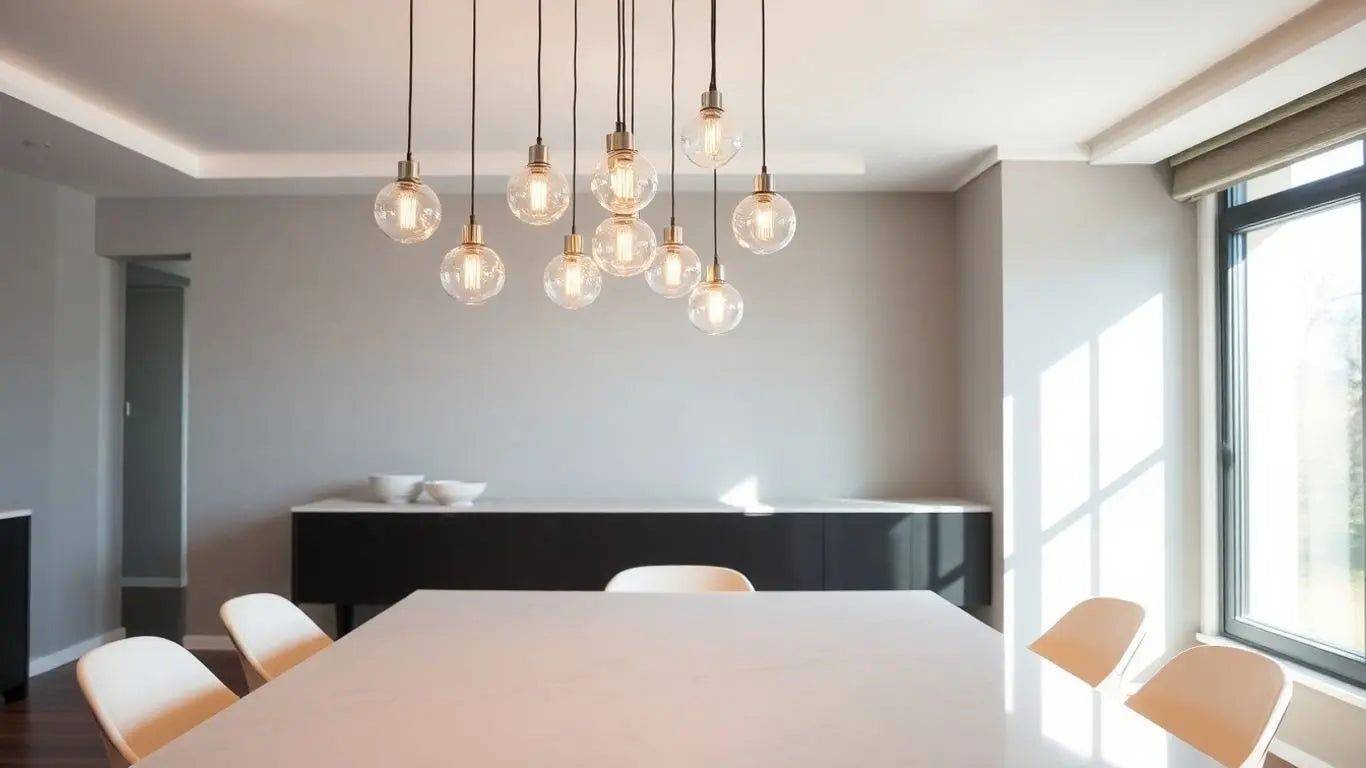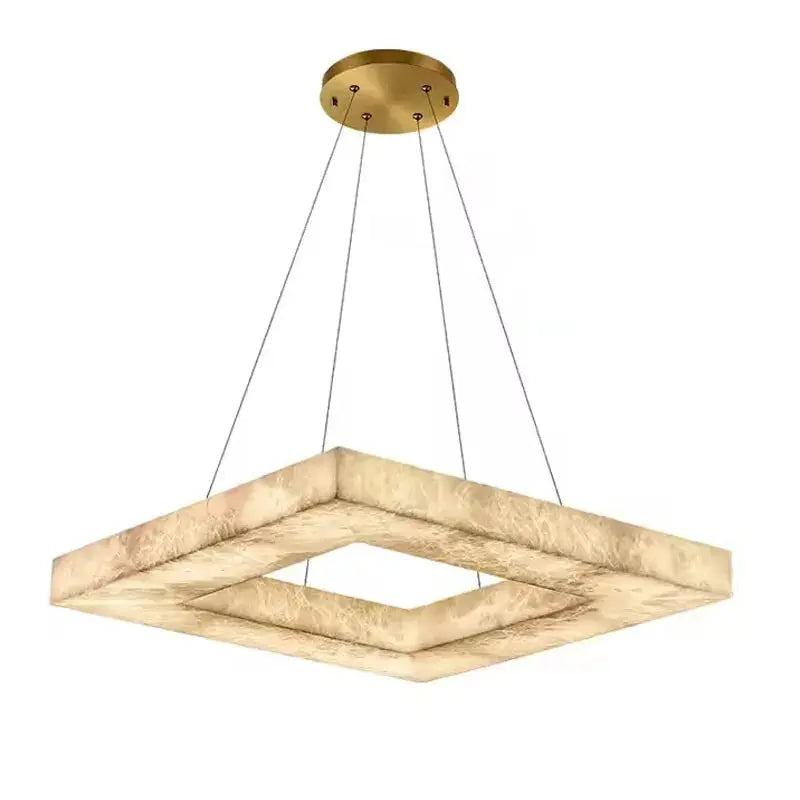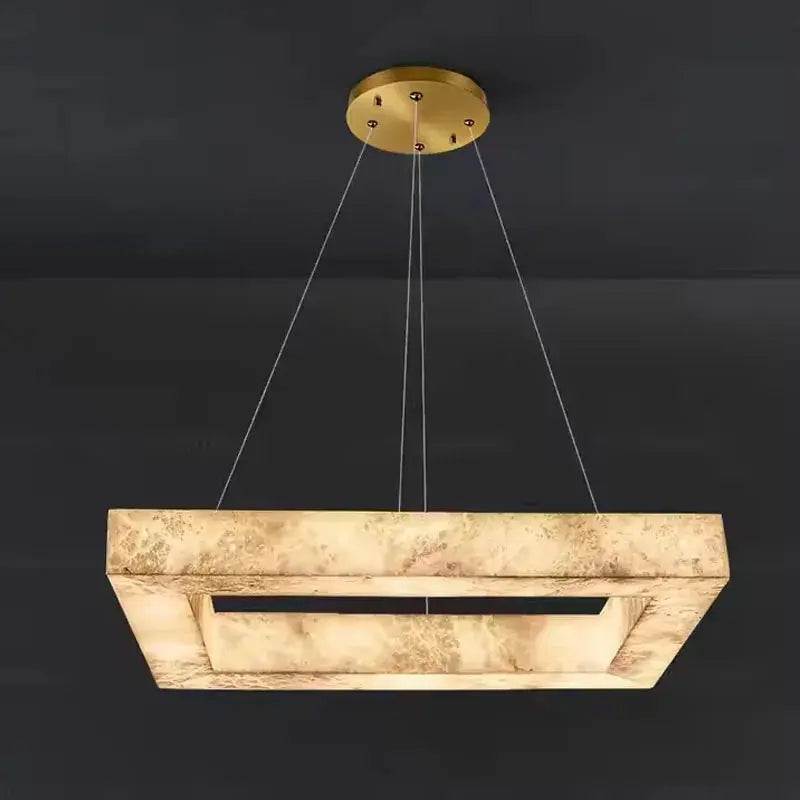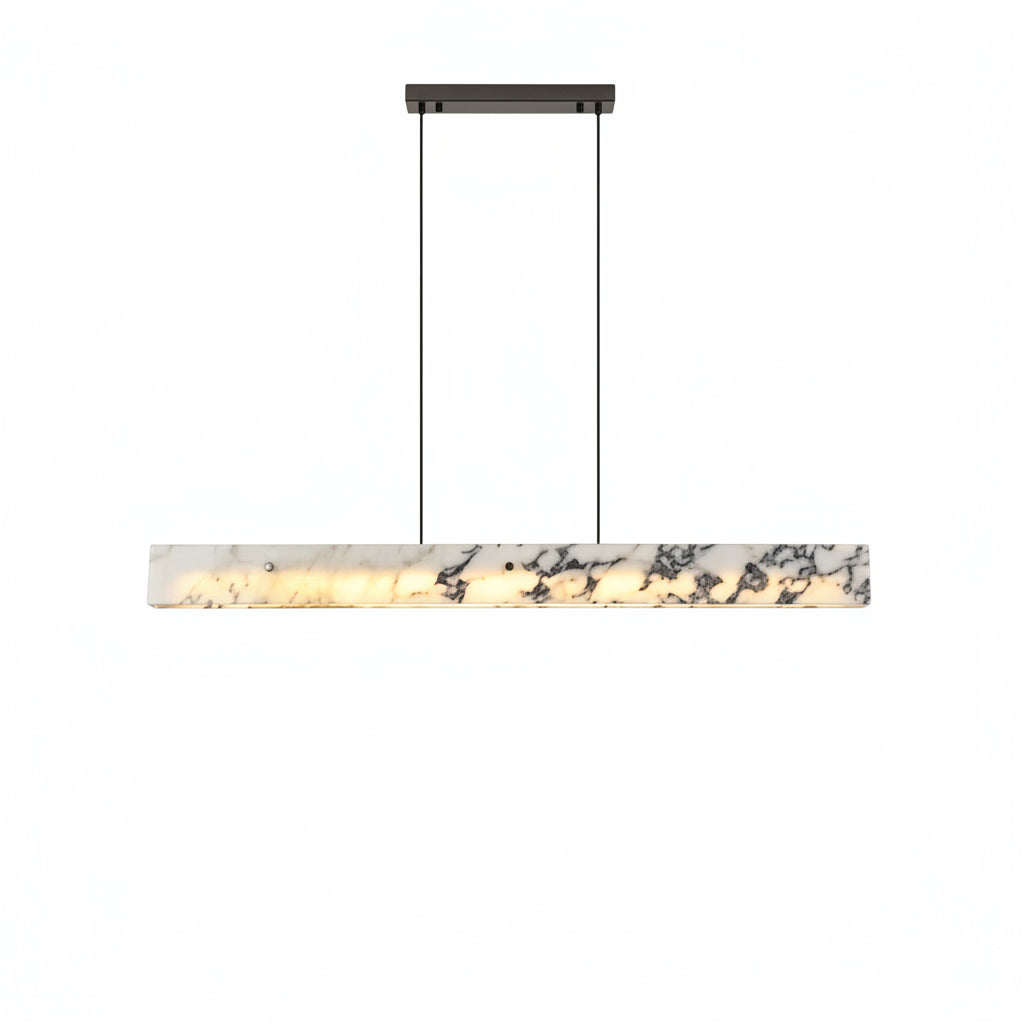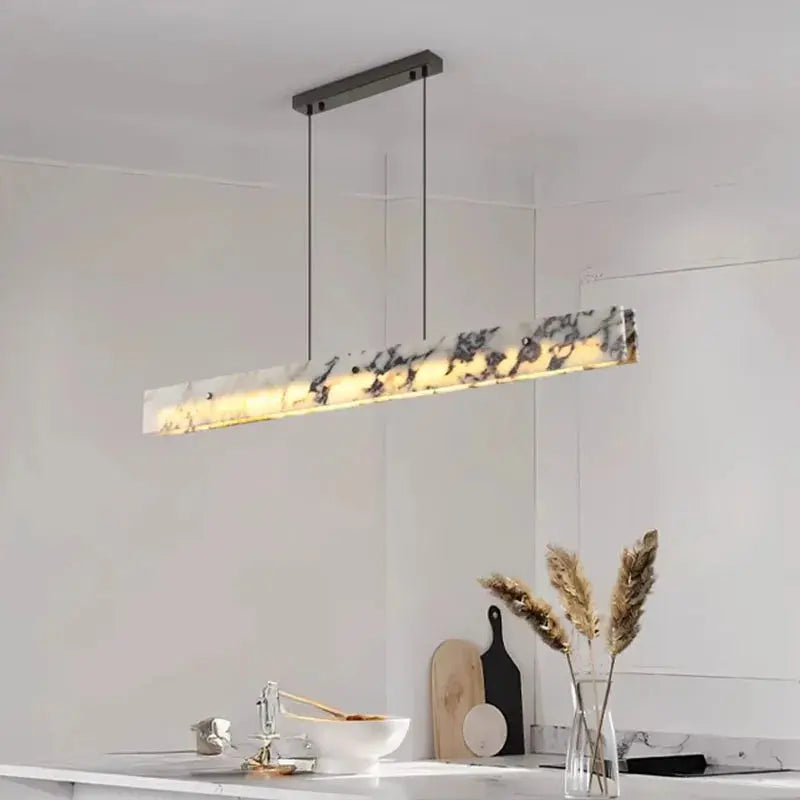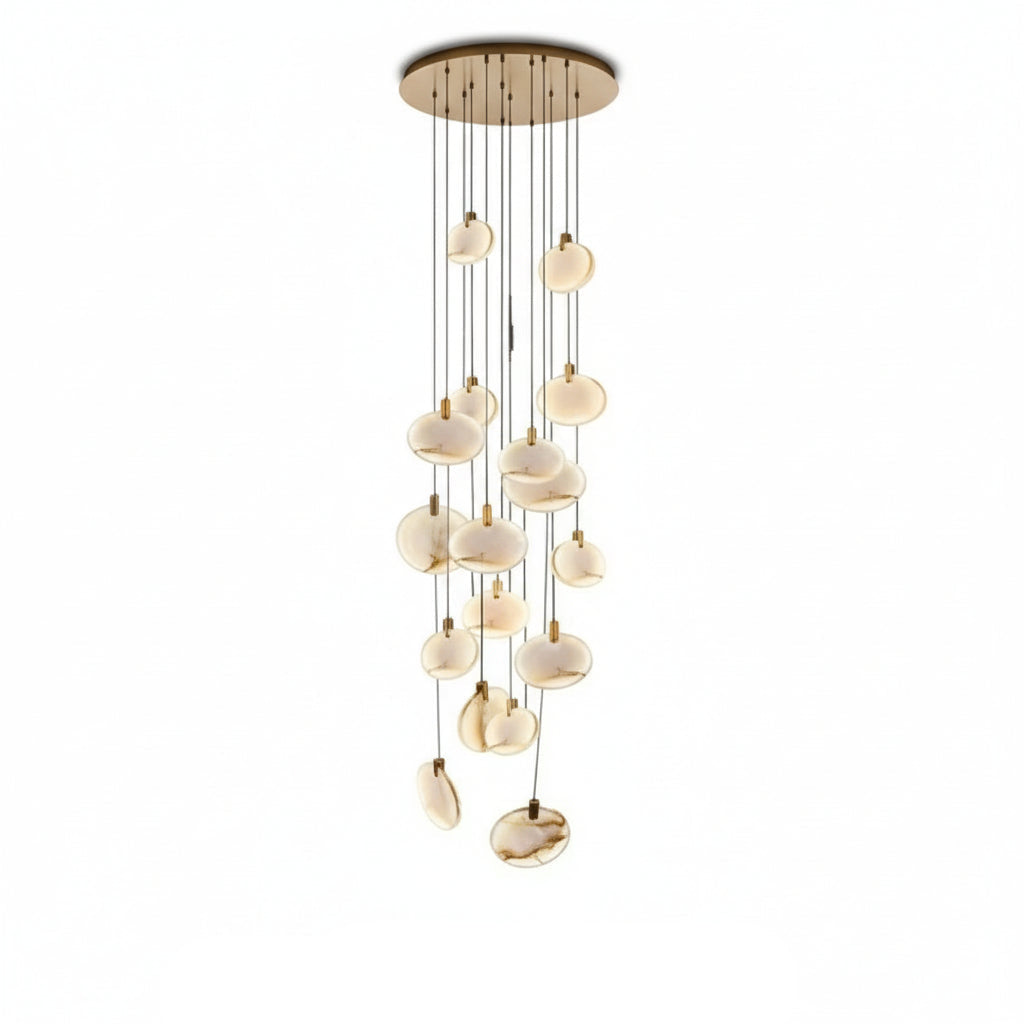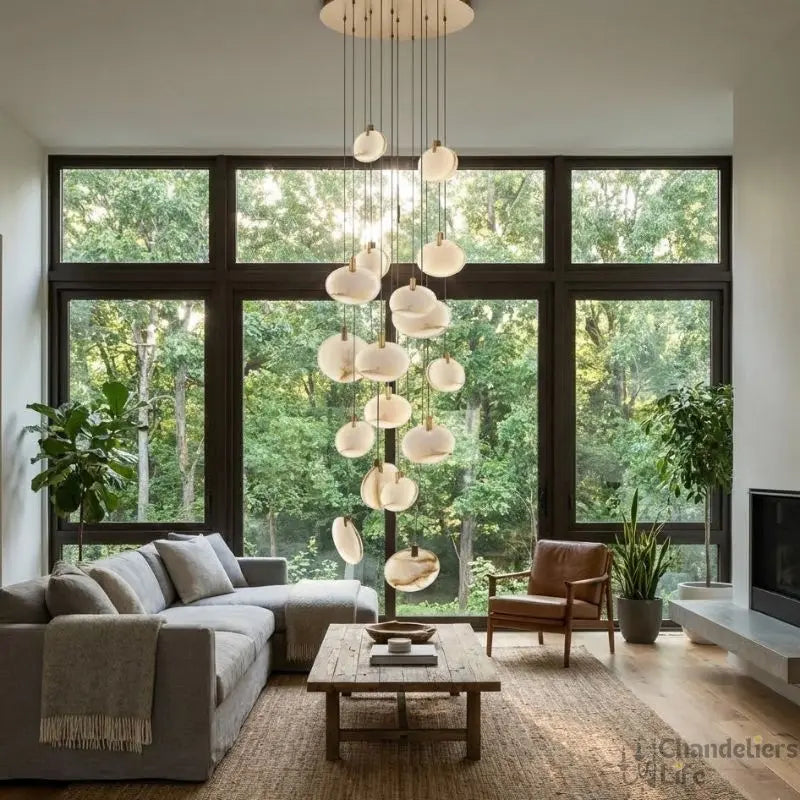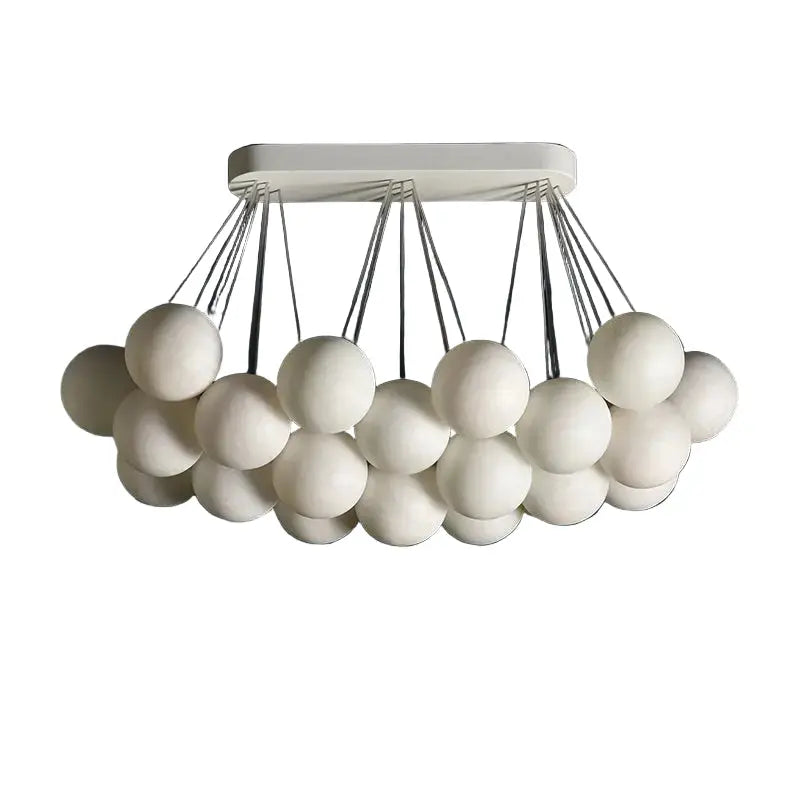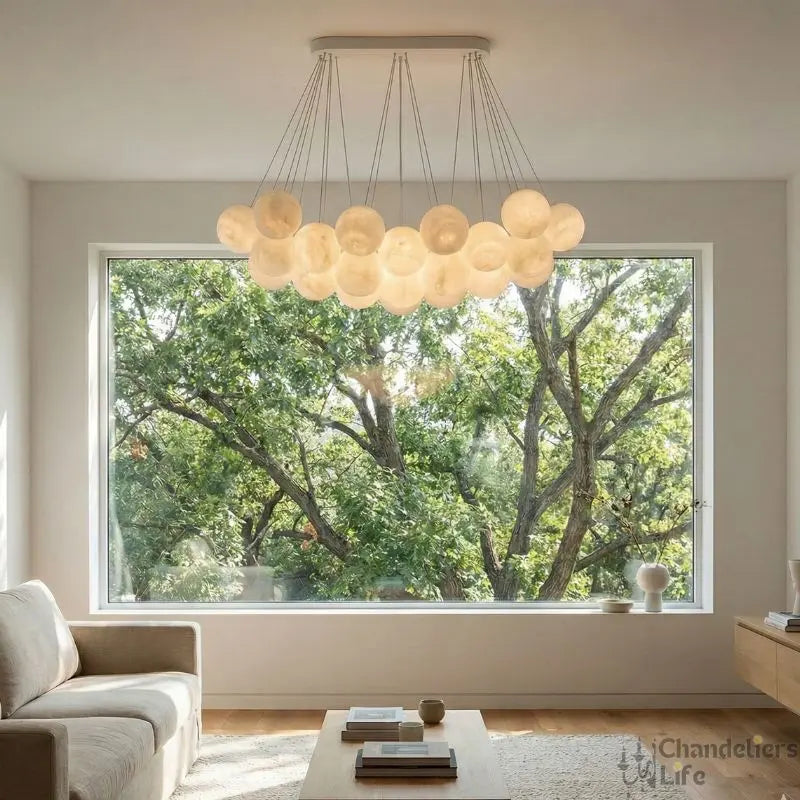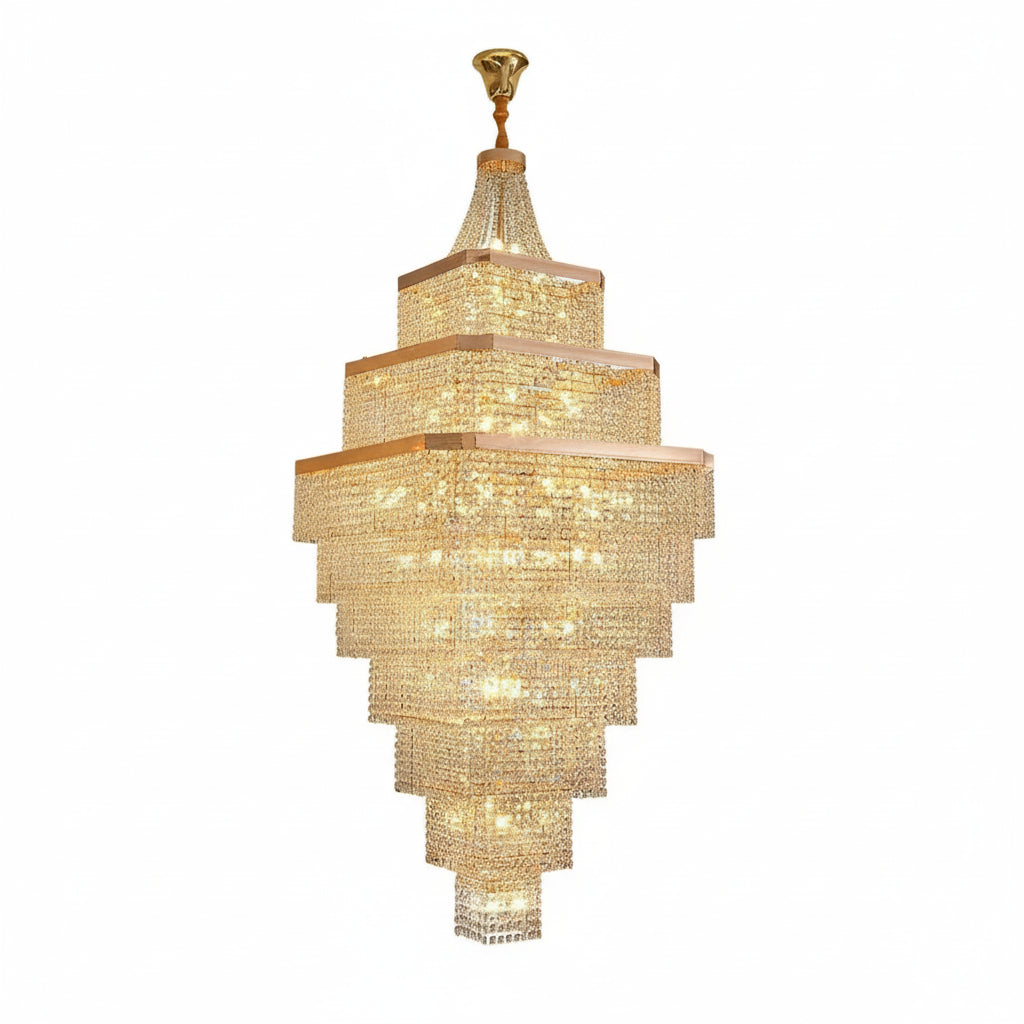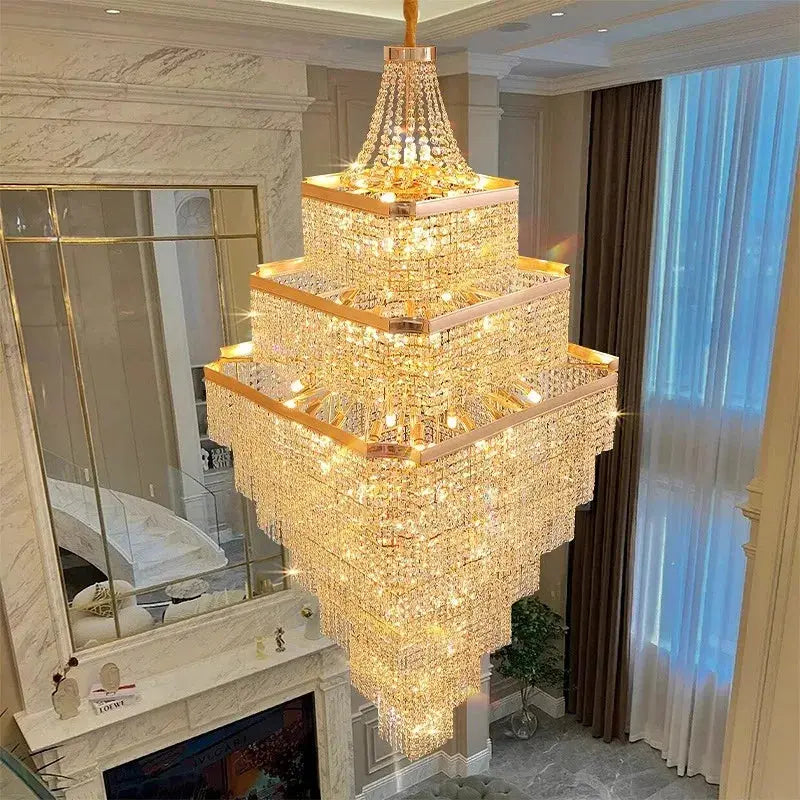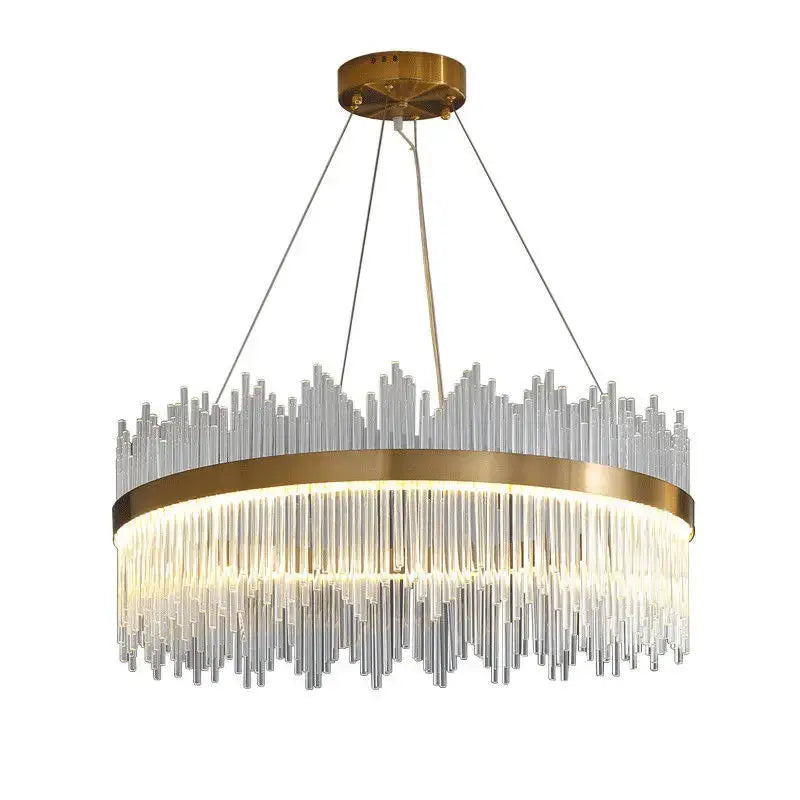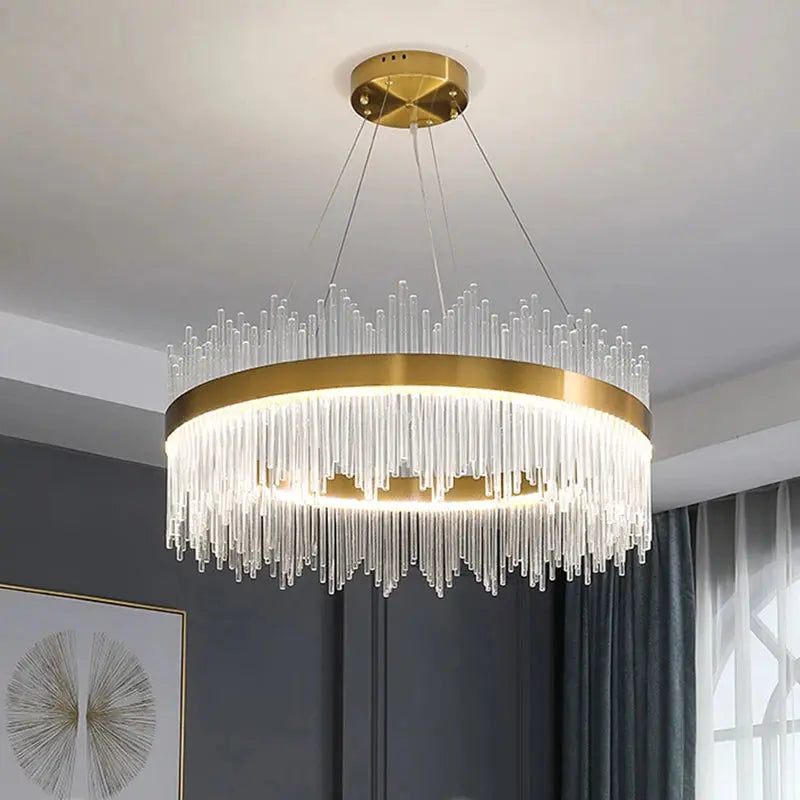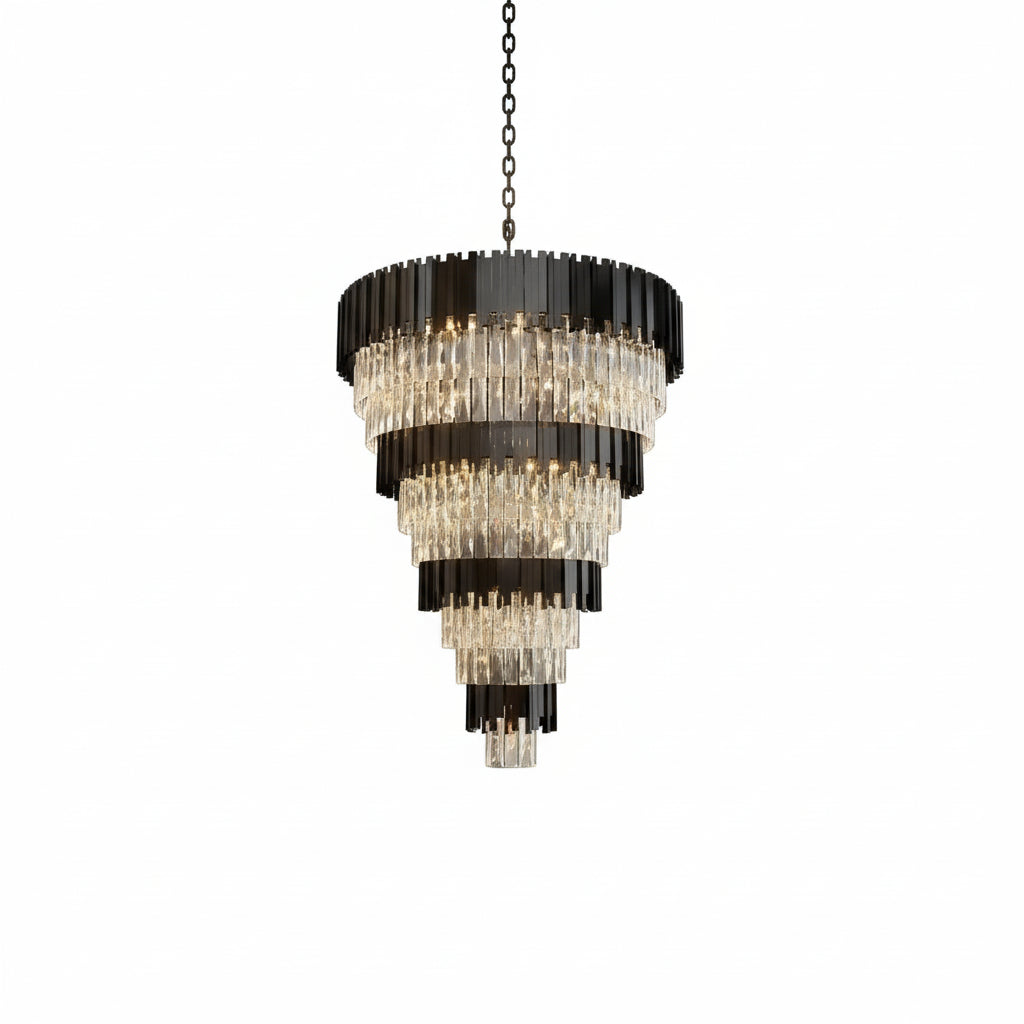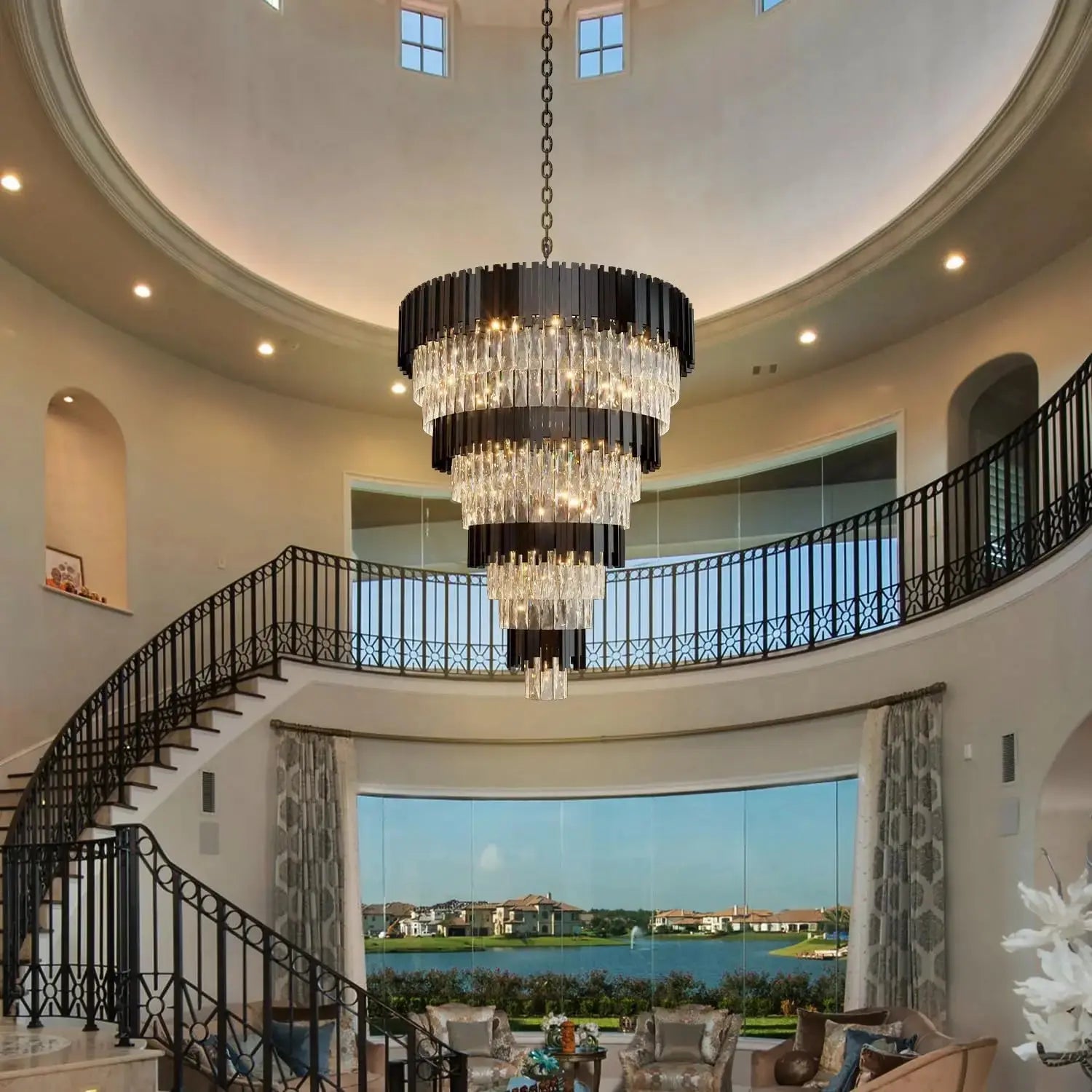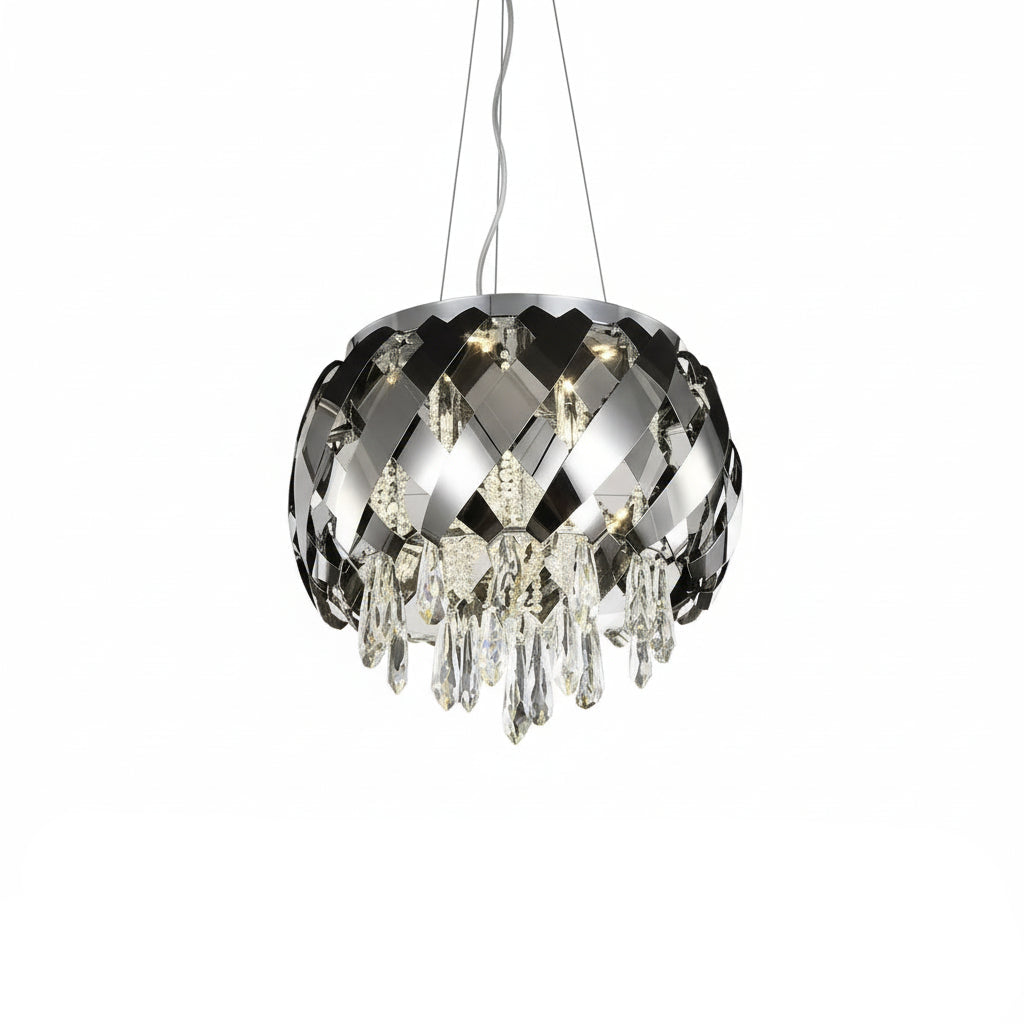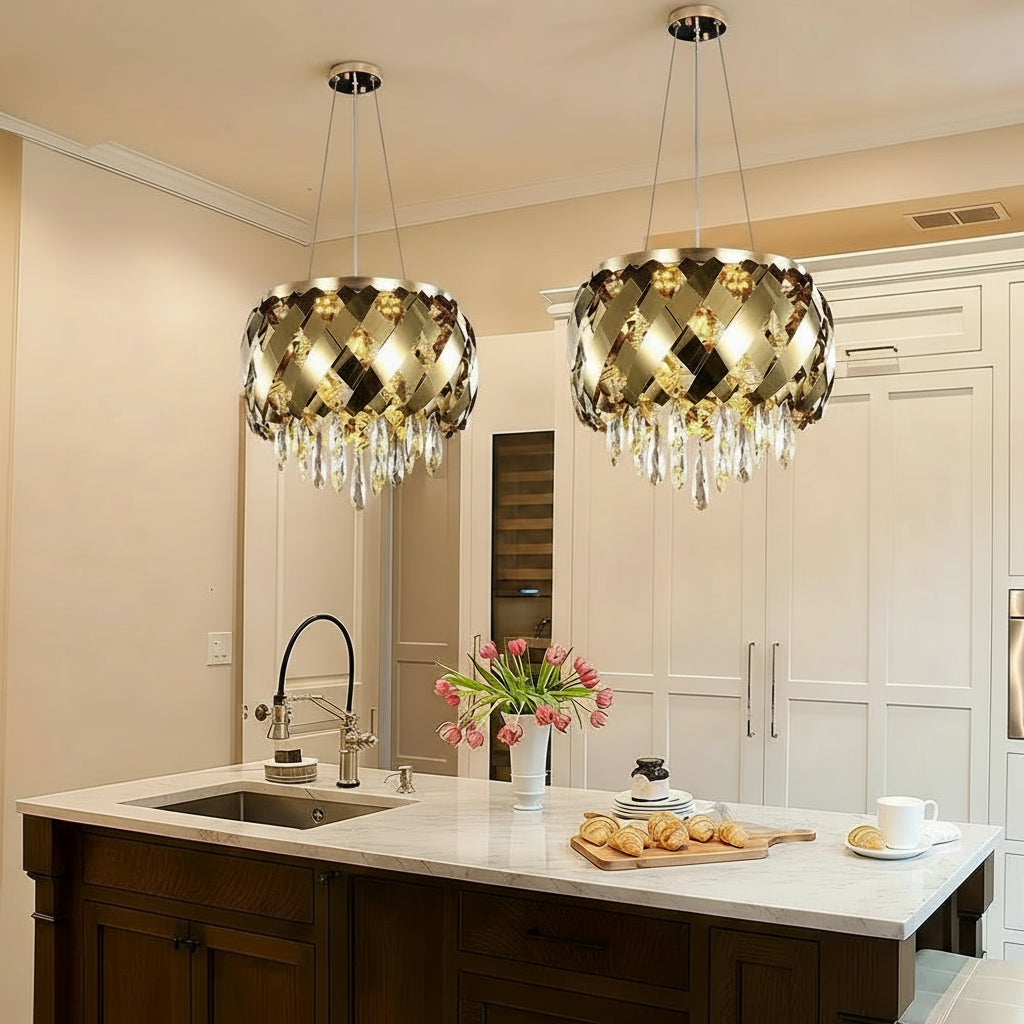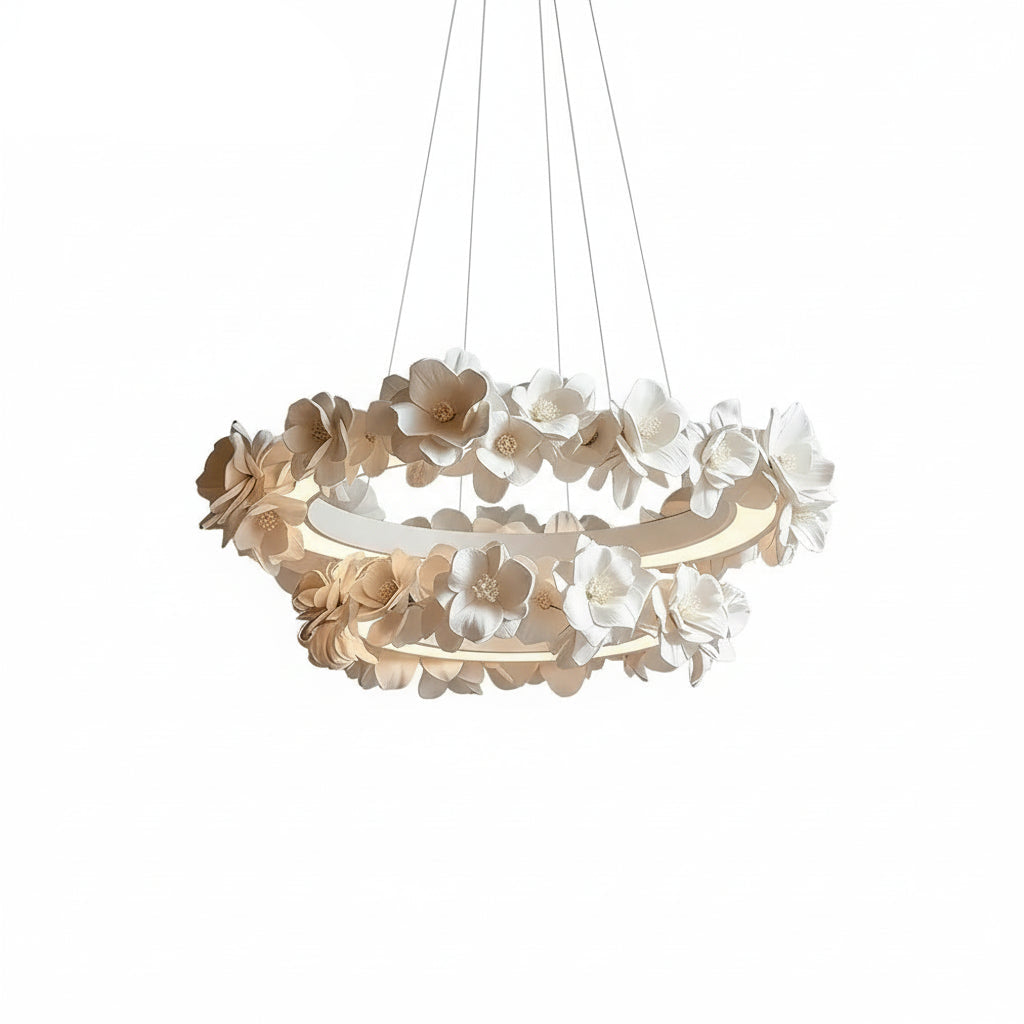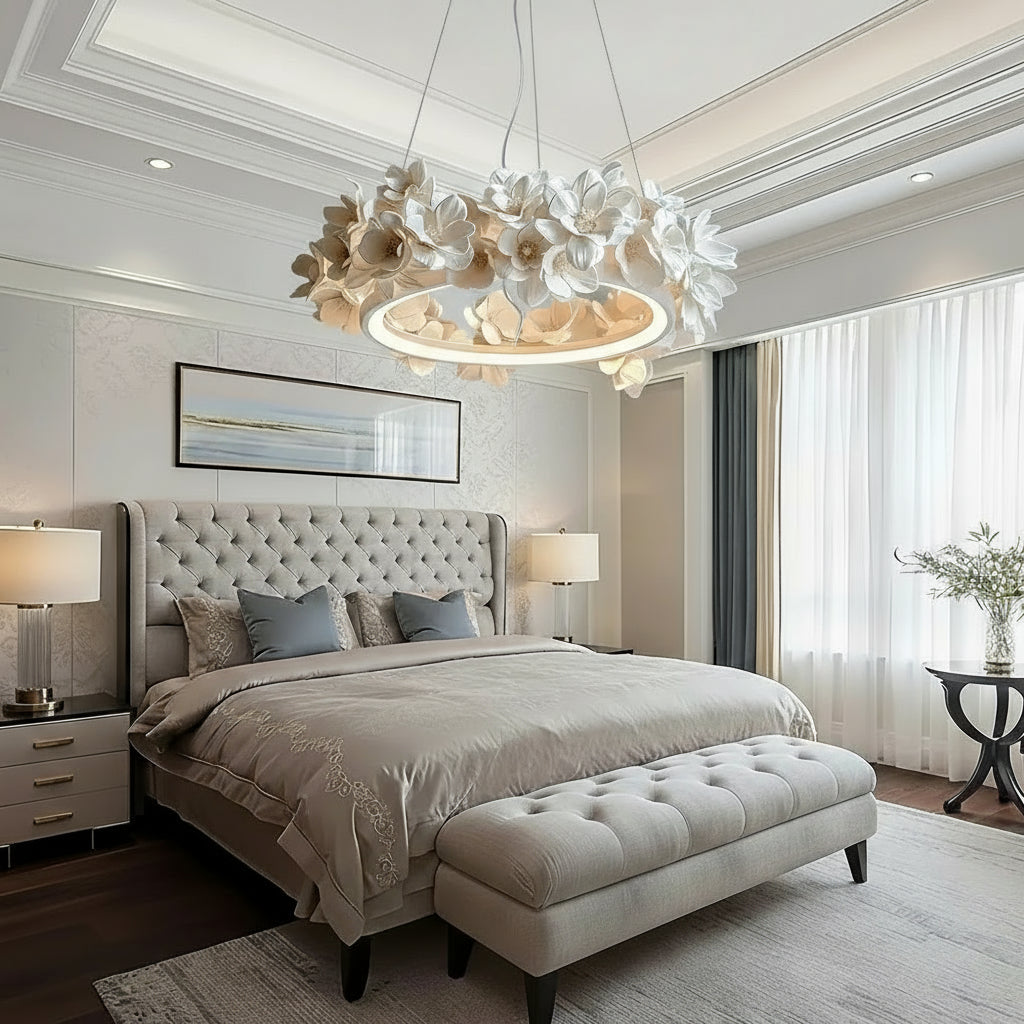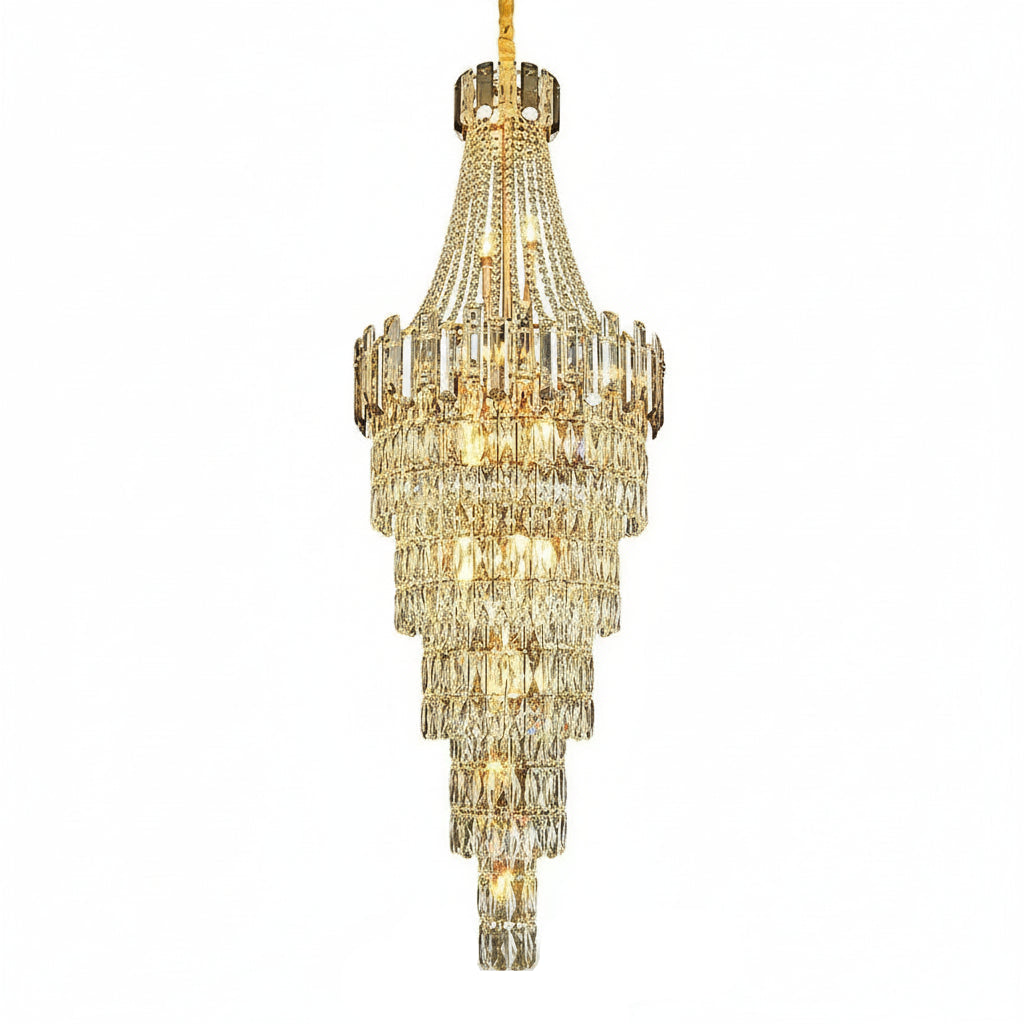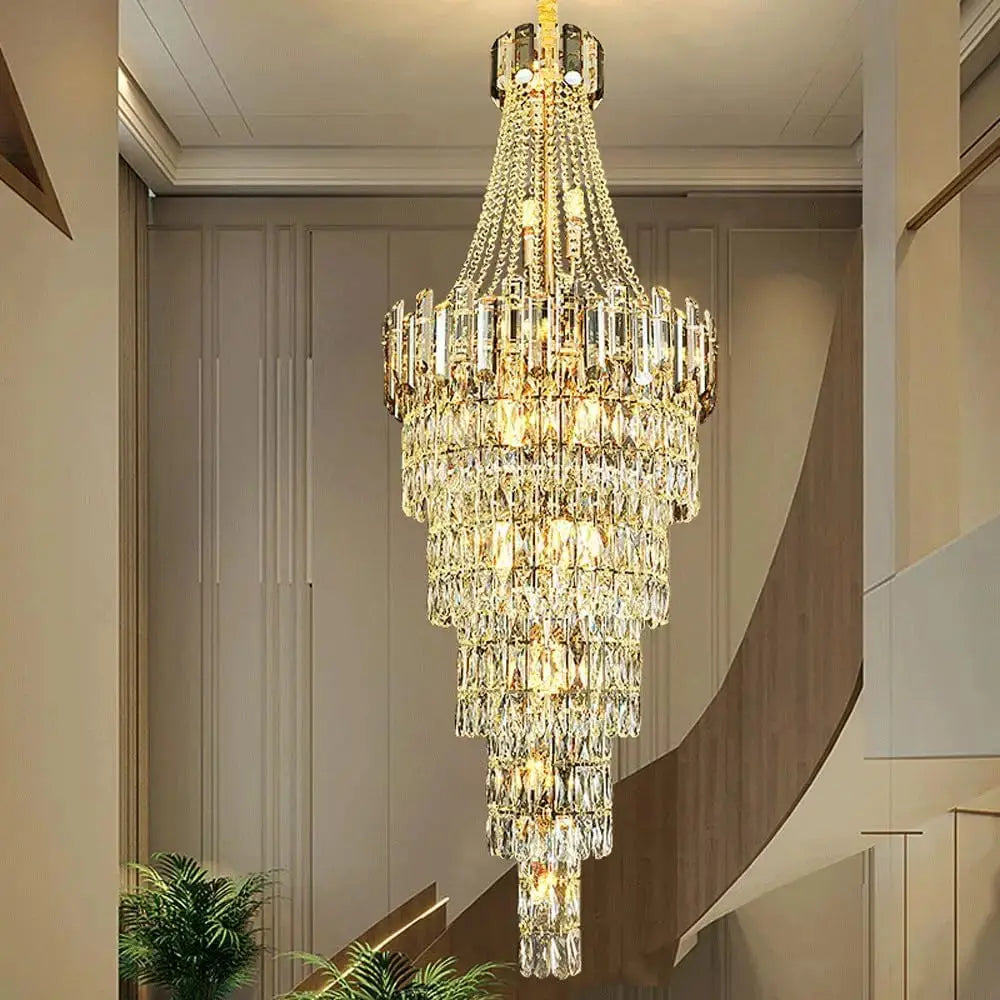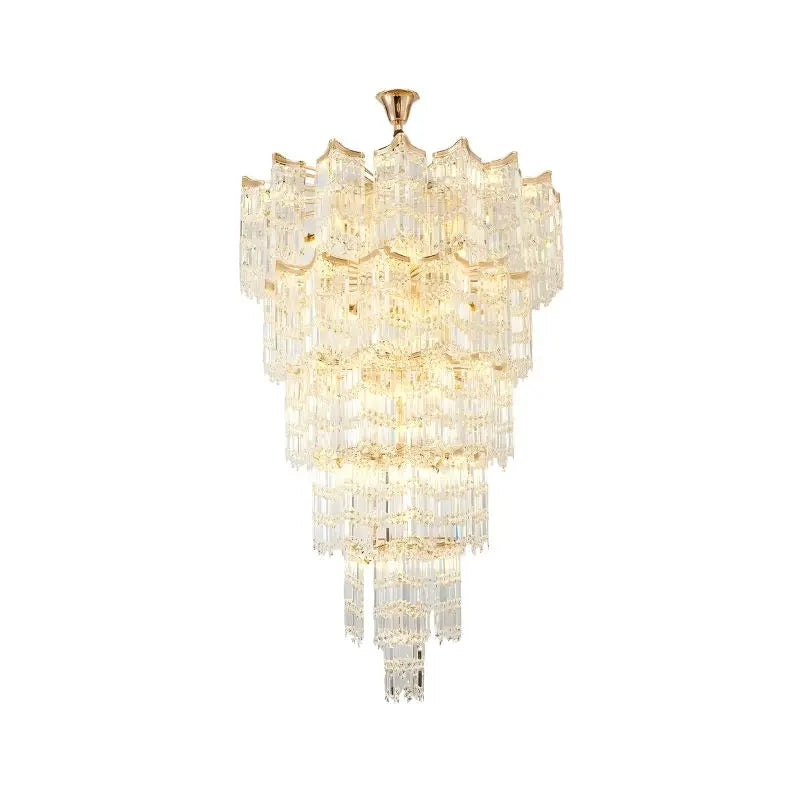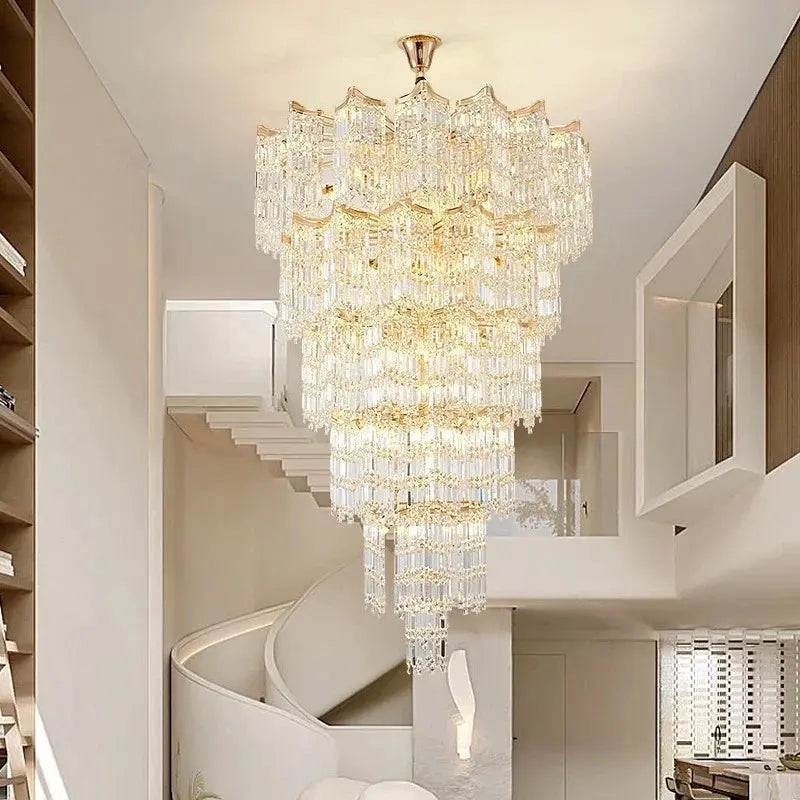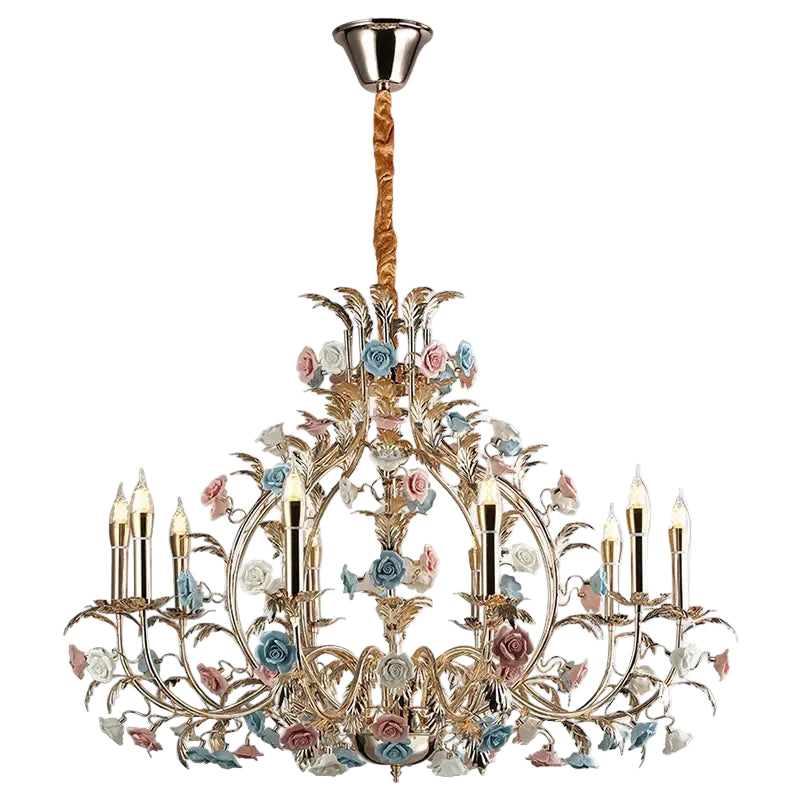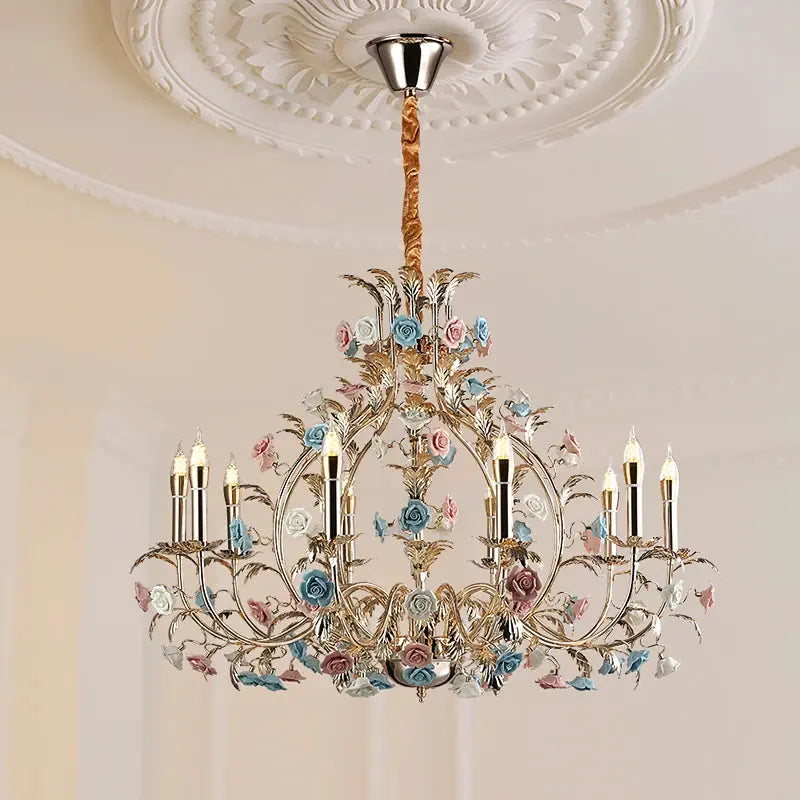Picking out the right hanging dining room lights can really change how your whole dining area feels. It's not just about brightness; it's about setting a mood and making a statement. This guide will walk you through the process, from figuring out what works for your room to choosing styles and materials that fit your taste. We'll cover everything you need to know about selecting the perfect hanging dining room lights.
Key Takeaways
- Think about your dining space's size and what's already in it before you pick hanging dining room lights.
- Look at different lighting styles, from modern to rustic, to find what you like best.
- The materials used for hanging dining room lights matter for both how they look and how long they last.
- Make sure the size and hanging height of the light fixture fit well with your dining table.
- Consider the kind of light you need and if features like dimmers would be useful.
Understanding Your Dining Space's Needs

Before you even start browsing for that perfect pendant or chandelier, let's get real about your dining room. Picking out a light fixture isn't just about aesthetics; it's about function and how it fits into your life. Think of it like choosing a centerpiece for your table – it needs to look good, but it also needs to work with everything else. Getting this part right makes the whole process smoother and helps you avoid those "oops, this doesn't quite work" moments later on.
Assessing Room Dimensions For Hanging Dining Room Lights
This is where we get a bit practical. You need to know the size of your dining room and, more importantly, the size of your dining table. A light that's too big can overwhelm a small room, making it feel cramped. On the flip side, a tiny pendant over a huge table can look a bit lost and won't provide enough light. It's all about balance. A good rule of thumb is to measure your table's length and width. Then, subtract about 12 inches from each measurement. This gives you the ideal diameter for a single pendant or the total span for multiple fixtures. For example, a 60-inch long table might do well with a fixture or group of fixtures that span about 48 inches.
| Table Dimension | Ideal Fixture Span |
|---|---|
| 48" x 36" | 36" |
| 72" x 40" | 60" |
| 96" x 48" | 84" |
Considering Existing Decor For Your Lighting Choice
What's already in your dining room? Take a good look at your furniture, the colors on the walls, and any other decor pieces you have. Your new light fixture should play nicely with what's already there. If you have a lot of dark wood furniture, a light with warm metal tones like brass or bronze might look great. If your room is very modern with clean lines and neutral colors, a sleek, minimalist fixture would fit right in. You don't want the light to clash; it should feel like a natural extension of your room's personality. Think about the overall vibe you're going for – is it cozy and inviting, or more formal and sophisticated?
- Modern & Minimalist: Clean lines, neutral colors, geometric shapes.
- Traditional & Classic: Ornate details, rich finishes, symmetrical designs.
- Rustic & Farmhouse: Natural materials, distressed finishes, simple forms.
- Bohemian: Eclectic mix, vibrant colors, textured materials.
Your dining room light is a chance to show off your taste and tie the whole room together. It should feel like a natural part of your home's story, not an afterthought.
Defining Your Personal Style
This is the fun part! What's your personal style? Are you drawn to clean, simple lines, or do you love ornate details? Maybe you prefer something that feels a bit more relaxed and natural. Your dining room light is a chance to show off your taste and make a statement. Consider the overall aesthetic you want to achieve. Do you lean towards the sleekness of contemporary design, the warmth of traditional pieces, the charm of farmhouse decor, or the free-spirited vibe of bohemian style? Your choice here will guide you through the vast array of available fixtures and help narrow down the options to what truly speaks to you and your home.
Exploring Styles Of Hanging Dining Room Lights
Choosing the right hanging light for your dining room is a big deal. It's not just about brightness; it's about setting the mood and tying your whole space together. Let's look at some popular styles that can really change how your dining area feels.
Modern And Contemporary Fixture Designs
If your home leans towards clean lines and a minimalist vibe, modern and contemporary fixtures are probably your best bet. Think sleek shapes, geometric forms, and often a mix of materials like brushed metal, glass, or even concrete. These lights tend to be statement pieces without being overly fussy. They work well in spaces that already have a strong design direction, complementing rather than competing with your furniture and decor. For a truly modern look, consider something like the LED Spiral Hanging Light Fixture.
Timeless Traditional And Classic Lighting
For a more timeless feel, traditional and classic lighting is the way to go. These often draw inspiration from historical designs, featuring ornate details, rich materials, and a sense of grandeur. Think crystal chandeliers, wrought iron fixtures, or lamps with fabric shades. Crystal chandeliers, in particular, are the ultimate in classic dining room lighting, offering sparkle and a luxurious feel.
Rustic And Farmhouse Charm
If you love a cozy, inviting atmosphere, rustic and farmhouse styles are perfect. These lights often incorporate natural materials like wood, distressed metals, and simple glass shades. They bring a sense of warmth and comfort to the dining space. Edison bulb pendants, with their exposed vintage filaments, offer a warm, industrial-chic look, while wood beam chandeliers add a substantial, earthy feel.
Bohemian Textures And Colors
Bohemian style is all about personality and a relaxed vibe. Think unique textures, vibrant colors, or handcrafted elements. These fixtures can be a bit more eclectic, perhaps featuring macrame, colorful glass, or intricate metalwork. They're perfect for adding a personal touch and a splash of creativity to your dining area.
Key Considerations For Hanging Dining Room Lights
Selecting the Perfect Style
When you're picking out a light fixture, the first thing to think about is how it fits with everything else in your dining room. Does your place have a modern vibe with clean lines, or is it more cozy with rustic touches? Your light should feel like it belongs. For a modern look, think about fixtures with simple shapes and materials like metal or glass. If you're going for a farmhouse feel, wood or wrought iron might be better. It's not just about what's trendy; it's about what makes your space feel right to you.
Determining the Ideal Height
Getting the height right is super important. Too high, and the light won't do much for the table. Too low, and people might bump their heads or feel like the light is in their face. A good general rule is to hang the bottom of the fixture about 30 to 36 inches above your dining table. This usually gives enough clearance and puts the light right where you need it for meals.
Here's a quick guide:
- Standard Dining Table Height: 30 inches
- Ideal Fixture Clearance: 30-36 inches above the table
- Total Height from Floor (approx.): 60-72 inches
Layering Your Lighting For Ambiance
Don't rely on just one light source. Think about adding other lights to create a more interesting and functional space. Maybe you have some dimmer-controlled overhead lights, or perhaps some wall sconces. Combining your main hanging light with these other sources lets you adjust the mood. You can have bright light for everyday meals and a softer glow for dinner parties. It makes the room feel more dynamic.
Layering light means using different types of fixtures to create depth and warmth. It's about more than just brightness; it's about setting a mood that works for various occasions.
Choosing the Right Bulbs and Dimmers
The type of bulb you use makes a big difference. Warm white bulbs tend to create a cozier atmosphere, which is great for dining. If you need to read menus or see details clearly, a slightly brighter bulb might be better. And don't forget about dimmers! A dimmer switch is a game-changer. It lets you easily change the light level from bright and functional to soft and romantic, all with a simple slide or turn. It adds a lot of flexibility to your dining experience.
Material Matters For Dining Room Lights
The stuff your dining room light is made of does more than just look pretty; it really changes the whole vibe of your space. Think about how different materials catch the light or how they feel to the touch. It’s not just about the shape, but the substance too.
Crystal Chandeliers For Sparkle
Crystal is a classic for a reason. It's great at scattering light, making your dining area feel brighter and more open. You can find everything from simple frosted glass shades that give off a soft glow to elaborate crystal chandeliers that really make a statement. Crystal, in particular, can add a touch of luxury and sparkle, reflecting light in beautiful ways. Just be mindful that delicate crystal can be a bit fragile, so handle with care during installation and cleaning. These are the ultimate in classic dining room lighting, offering sparkle and a luxurious feel.
Edison Bulb Pendants For Industrial Chic
If you're going for a more modern, edgy vibe, Edison bulb pendants are a fantastic choice. These showcase exposed bulbs, often with a vintage filament, for a warm, industrial-chic look. The metal components of these fixtures often come in finishes like matte black or brushed nickel, which really lean into that contemporary feel. They lend a modern and edgy vibe to the dining space, complementing both contemporary and rustic design styles.
Wood Beam Chandeliers For Earthy Feel
If you're going for a more relaxed, earthy feel, wood and natural elements are the way to go. Think about lights with wooden beads, reclaimed wood accents, or even woven natural fibers like rattan or bamboo. These materials bring a sense of warmth and texture that can make your dining room feel really cozy and inviting. They pair wonderfully with farmhouse, bohemian, or Scandinavian decor styles. Combining rustic wood elements with metal accents, these fixtures add a substantial, earthy feel. It's a nice way to bring a bit of the outdoors in, without being too literal about it.
Wrought Iron For Old-World Charm
For a touch of old-world charm, wrought iron fixtures are a wonderful option. With their dark, often hand-forged appearance, these lend an authentic, old-world feel. They can add a sense of history and character to your dining room, especially when paired with more traditional or rustic decor. These fixtures often have a substantial presence, making them a great focal point.
The material you choose significantly impacts the overall aesthetic and atmosphere of your dining room.
Here's a quick look at some popular material and finish combinations:
| Material/Finish | Vibe |
|---|---|
| Crystal | Luxurious, sparkling |
| Brushed Nickel/Chrome | Modern, clean |
| Polished Brass | Traditional, elegant |
| Matte Black | Industrial, contemporary |
| Oil-Rubbed Bronze | Rustic, warm |
| Wood | Earthy, cozy |
| Wrought Iron | Old-world, rustic |
When considering materials, also think about how they'll fit with your existing furniture and decor. For instance, a light with warm metal tones like brass or bronze might look great with dark wood furniture, while a sleek, minimalist fixture would fit right in with a modern room. You don't want the light to clash; it should feel like a natural extension of your room's personality. You can find a wide selection of wall lights to enhance your home's ambiance that incorporate many of these materials and styles.
Achieving The Right Scale And Proportion
Fixture Size Relative To Table Shape
Picking the right size for your dining room light fixture is more important than you might think. Get it wrong, and it can make the whole room feel a bit off. Too big, and it might overwhelm the space. Too small, and it can get lost, not giving you enough light or presence. It's all about balance. A good rule of thumb is to measure your table's length and width. Then, subtract about 12 inches from each measurement. This gives you the ideal diameter for a single pendant or the total span for multiple fixtures. For example, a 60-inch long table might do well with a fixture or group of fixtures that span about 48 inches. Generally, the diameter of a chandelier or pendant light should be about half to two-thirds the width of your table. For a round table, a round fixture often looks best, while a linear chandelier can complement a rectangular table. Mixing shapes can also work if you're going for a more eclectic look.
Optimal Hanging Height For Visibility
Getting the height right is key for both aesthetics and function. You want the light to illuminate your table without blinding anyone sitting at it. A good starting point is to hang the bottom of the fixture about 30 to 36 inches above the tabletop. This height provides enough clearance for people to move around without hitting their heads, while still casting a good amount of light downwards. If you have very tall ceilings, you might need a longer chain or rod to achieve this. Remember, these are general guidelines, and the optimal height can vary based on your specific dining room layout and personal preferences. It’s always a good idea to measure your space carefully.
Balancing Light Size With Room Dimensions
Beyond the table, the overall room dimensions play a part too. A common guideline for fixture diameter is to add the room's length and width (in feet) together; the sum, in inches, is a good maximum diameter for your fixture. For instance, a 10x12 foot room suggests a fixture around 22 inches. For smaller rooms (under 100 sq ft), aim for 15-20 inches. Medium rooms (100-200 sq ft) can handle 20-28 inches. Larger rooms (over 200 sq ft) can accommodate fixtures 28 inches or more. In open floor plans or spaces with high ceilings, oversized pendant lights can help fill the vertical height so the room doesn’t feel empty. The trick is to think of proportion not only in terms of size but also placement. Hang pendants too high, and they lose their presence; too low, and they interrupt the flow of the room. Finding the right modern lighting solutions can really tie everything together.
Versatile Pendant Lighting Options

Pendant lights are incredibly adaptable, offering a fantastic way to define your dining area and add personality. They hang from the ceiling, and you can use them in so many ways, from a single statement piece to a whole group. It’s really about how you want the light to feel and look in your space.
Single Pendant Lights as Focal Points
Sometimes, one really good pendant light is all you need. A single fixture hung directly over your dining table can become the main attraction. Think of it like a piece of art that also happens to light up your meals. It draws the eye and gives the table a sense of importance. You can go for something simple and clean, or pick a design that's really bold and makes a statement. It’s a straightforward way to add style without overcomplicating things. For example, a fixture with a colorful glass shade can really liven up a room adds a pop of personality.
Clustered Pendant Lights for Impact
If you're looking to create a bit more drama or fill a larger space, clustering several pendant lights together is a great move. This arrangement can be visually stunning and provides a good amount of light. You can play around with different heights and even mix and match similar styles for a unique look. It’s a way to add texture and visual interest, making the lighting a real design feature. This approach works well when you want to make a strong impression.
Multi-Light Pendants for Task Lighting
Multi-light pendants are a smart choice if you need good, focused light over your dining table. These fixtures have several light sources built into one unit, offering a modern look and excellent task lighting. They're great for making sure everyone can see their food clearly, but they also add a stylish element. It’s a practical solution that doesn’t skimp on design. You get the benefit of multiple lights without the visual clutter of hanging several separate fixtures.
When choosing pendant lights, it’s not just about how bright they are. The right fixture can totally change the mood of a room, highlight certain features, and turn a plain area into something special. It’s worth thinking about the overall feel you want to create.
Here are a few ideas for using pendants:
- Single Pendant: Best for smaller tables or when you want a minimalist look.
- Cluster: Great for longer tables or to fill a large, open space.
- Multi-Light: Ideal for providing ample, even light over any size table.
Wrapping It Up
So, picking out the right hanging lights for your dining room is a pretty big deal. It's not just about making things bright; it's about setting the whole mood for your space. We've gone over how to think about your room's size, what style fits your vibe, and how to get the height just right. Remember, the goal is to make your dining area a place where you and your guests feel comfortable and happy, whether you're having a fancy dinner or just a weeknight meal. Don't be afraid to play around with different ideas until you find that perfect fixture that makes your dining room truly shine.
Frequently Asked Questions
How do I choose the right size light for my dining table?
Think about your table's shape and size. For a long table, a long light or a few smaller ones work well. For a round table, one round light or a chandelier is a good choice. A good rule is that the light shouldn't be wider than about half to two-thirds of your table's width.
What's the best height to hang a dining room light?
You want the light high enough so people don't hit their heads, but low enough to light up the table well. Usually, hang the bottom of the light about 30 to 36 inches above the table. This can change a bit depending on the light's size and your ceiling height.
Should my dining room light match my other decorations exactly?
It doesn't have to match perfectly, but it should look like it belongs. If your room is modern, a simple, sleek light will fit in. If it's more classic, a fancy chandelier might be better. The light should go well with your style, not stick out strangely.
What's the difference between general light and task light in a dining room?
General light (or ambient light) is the soft light that fills the whole room. Task light is more focused, like the light that shines right on your food and table. For dining rooms, you usually want both. A dimmer switch is great for changing the mood.
Are lights with dimmer switches useful for a dining room?
Yes, absolutely! Lights with dimmers are awesome for dining rooms. You can have bright light for everyday meals or parties, and then dim it down for a romantic dinner or a relaxed evening. It really helps set the right mood for any event.
Can I put up a hanging light myself, or should I hire someone?
If you're comfortable with basic electrical work and have the right tools, you might be able to do it yourself. But for safety and to make sure it's done right, hiring an electrician is often the best idea, especially for heavy lights or if you're not sure about the wiring.

